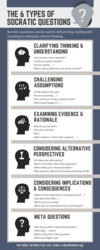Marketing lesson 1 - 4 Flashcards
(64 cards)
Elements of normative level of a company
Before considering how a corporation can be led successfully, we should consider a more fundamental question – in what direction should a corporation be led. What is its meaningful mission, its added-value purpose? Which fundamental business principles should it choose to adhere to? What measures can be taken to help a corporation achieve an acceptable normative orientation?
Explain the two dimensions of reasonable practice.
Dispositional knowledge consists of instrumental knowledge (“know-how”) for the realization of given purposes, without offering “know-what” and “know- why” regarding the justification of those purposes.

Explain dispositional knowledge
Dispositional knowledge, as the term suggests, is a disposition, or a propensity, to behave in certain ways in certain conditions. Although Smith may not now be thinking of his home address, he certainly knows it in the sense that, if one were to ask him…
Explain Platon
Origin, born and died, occupation
Born 424/423 BC in Athens, Greece
Died 348/347 BC (age c. 80) Athens, Greece
Ancient Greek philosophy
Teacher and student of Platon

He is widely considered as one of the most important and influential individuals in human history,[3] and the pivotal figure in the history of Ancient Greek and Western philosophy, along with his teacher, Socrates, and his most famous student, Aristotle.
central and important
She played a … role in the civil rights movement.
Because immigrants do jobs that many people do not want to do, they play a … role in the economy.
central and important
She played a pivotal role in the civil rights movement.
Because immigrants do jobs that many people do not want to do, they play a pivotal role in the economy.
What is important to explain to students when I tell the story of Platon’s Allegory of the cave?
To explain them the reason of the story linked to strategic marketing.
A company has to show, by asking questions (socrates methode) and reasoning, that the defined vision, mission, core values lead to a prosperus future. Employees will never leave the cave if they do not believe there is a better future
Explain the different levels of the allegory of the cave.
Imprissonment in the cave
Departure from the cave
Return to the cave
What happend in the imprisonment in the cave?
Plato begins by having Socrates ask Glaucon to imagine a cave where people have been imprisoned from childhood, but not from birth. These prisoners are chained so that their legs and necks are fixed, forcing them to gaze at the wall in front of them and not to look around at the cave, each other, or themselves. Behind the prisoners is a fire, and between the fire and the prisoners is a raised walkway with a low wall, behind which people walk carrying objects or puppets “of men and other living things”. The people walk behind the wall so their bodies do not cast shadows for the prisoners to see, but the objects they carry do (“just as puppet showmen have screens in front of them at which they work their puppets”. The prisoners cannot see any of what is happening behind them, they are only able to see the shadows cast upon the cave wall in front of them. The sounds of the people talking echo off the walls, and the prisoners believe these sounds come from the shadows.
What happend in the department of the cave?
Plato then supposes that one prisoner is freed. This prisoner would look around and see the fire. The light would hurt his eyes and make it difficult for him to see the objects casting the shadows. If he were told that what he is seeing is real instead of the other version of reality he sees on the wall, he would not believe it. In his pain, Plato continues, the freed prisoner would turn away and run back to what he is accustomed to (that is, the shadows of the carried objects). He writes “… it would hurt his eyes, and he would escape by turning away to the things which he was able to look at, and these he would believe to be clearer than what was being shown to him.”
Plato continues: “Suppose… that someone should drag him… by force, up the rough ascent, the steep way up, and never stop until he could drag him out into the light of the sun.” The prisoner would be angry and in pain, and this would only worsen when the radiant light of the sun overwhelms his eyes and blinds him.
“Slowly, his eyes adjust to the light of the sun. First he can see only shadows. Gradually he can see the reflections of people and things in water and then later see the people and things themselves. Eventually, he is able to look at the stars and moon at night until finally he can look upon the sun itself.” Only after he can look straight at the sun “is he able to reason about it” and what it is.
What happend in the return to the cave?
Plato continues, saying that the freed prisoner would think that the world outside the cave was superior to the world he experienced in the cave and attempt to share this with the prisoners remaining in the cave attempting to bring them onto the journey he had just endured; “he would bless himself for the change, and pity [the other prisoners]” and would want to bring his fellow cave dwellers out of the cave and into the sunlight.
The returning prisoner, whose eyes have become accustomed to the sunlight, would be blind when he re-enters the cave, just as he was when he was first exposed to the sun. The prisoners, according to Plato, would infer from the returning man’s blindness that the journey out of the cave had harmed him and that they should not undertake a similar journey. Plato concludes that the prisoners, if they were able, would therefore reach out and kill anyone who attempted to drag them out of the cave.
Explain corporate identity
Corporate identity is how your business presents itself to the outside world. Although internal culture and values are integral to shaping company identity, the corporate identity definition applies to a company’s visual assets and brand design.
What are the elements of the corporate identity?
Corporate culture
Corporate communication
Corporate behaviour
Corporate design

Explain corporate culture
Corporate culture refers to the beliefs and behaviors that determine how a company’s employees and management interact.
Corporate culture is also influenced by national cultures and traditions, economic trends, international trade, company size, and products.
Corporate cultures, whether shaped intentionally or grown organically, reach to the core of a company’s ideology and practice, and affect every aspect of a business.
https://www.investopedia.com/terms/c/corporate-culture.asp
What are the six components of a great corporate culture (according to Harvard)?
- Vision
- Values
- Practices
- People
- Narrative
- Place
Explain vision, what is it for?
- Vision: A great culture starts with a vision or mission statement. These simple turns of phrase guide a company’s values and provide it with purpose. That purpose, in turn, orients every decision employees make. When they are deeply authentic and prominently displayed, good vision statements can even help orient customers, suppliers, and other stakeholders.
Explain values
- Values: A company’s values are the core of its culture. While a vision articulates a company’s purpose, values offer a set of guidelines on the behaviors and mindsets needed to achieve that vision.
Explain practices
Practices: Of course, values are of little importance unless they are enshrined in a company’s practices. If an organization professes, “people are our greatest asset,” it should also be ready to invest in people in visible ways.
And whatever an organization’s values, they must be reinforced in review criteria and promotion policies, and baked into the operating principles of daily life in the firm.
Explain people
People: No company can build a coherent culture without people who either share its core values or possess the willingness and ability to embrace those values. That’s why the greatest firms in the world also have some of the most stringent recruiting policies.
Explain narrative
Any organization has a unique history — a unique story. And the ability to unearth that history and craft it into a narrative is a core element of culture creation. The elements of that narrative can be formal — like Coca-Cola, which dedicated an enormous resource to celebrating its heritage and even has a World of Coke museum in Atlanta — or informal, like those stories about how Steve Jobs’ early fascination with calligraphy shaped the aesthetically oriented culture at Apple. But they are more powerful when identified, shaped, and retold as a part of a firm’s ongoing culture.
Explain place
Certain cities and countries have local cultures that may reinforce or contradict the culture a firm is trying to create. Place — whether geography, architecture, or aesthetic design — impacts the values and behaviors of people in a workplace.
Explain corporate image
The way in which a company is seen and understood by people in general
create/build/have a corporate image Some companies understand that becoming more energy-efficient can help them to create a good corporate image, which in turn can helptheir profits.
Developing the right corporate image can be crucial to success.
Who was Artemisia Gentileschi
Origin, born and died, art epoche, art style, why famous?
Artemisia Lomi or Artemisia Gentileschi; July 8, 1593 – c. 1656) was an Italian Baroque painter.
Gentileschi is considered among the most accomplished seventeenth-century artists, initially working in the style of Caravaggio.
She was producing professional work by the age of fifteen.
In an era when women had few opportunities to pursue artistic training or work as professional artists,
Gentileschi was the first woman to become a member of the Accademia di Arte del Disegno in Florence and she had an international clientele.
Who is it?

Artemisia Gentileschi








